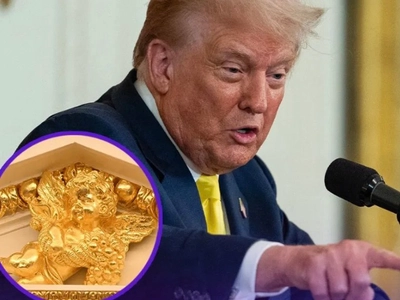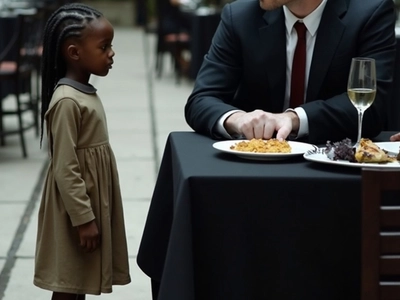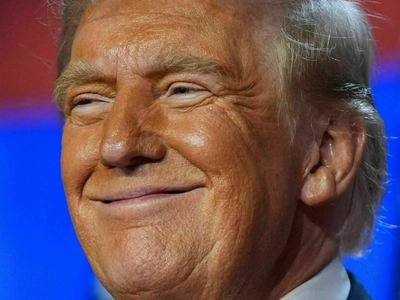Donald Trump’s decision to cover White House in gold has triggered backlash as people make sad point
The plan sounded like something out of a movie: a nine-figure makeover for the White House, with flashes of gold in places where people are used to seeing wood, marble, and history. President Trump, never shy about big gestures, had decided to gold-plate parts of the building. At the same time, his team announced a new ballroom with a price tag that made people blink—two hundred million dollars. The date was clear in the notice: July 31. The message was just as clear. The White House, they said, needed a proper space to host major events. For years, large state functions had meant putting up a big tent, a hundred yards from the main entrance. That tent, in the words of the announcement, was “unsightly.” A ballroom, they argued, would match the dignity of the guests and the building itself.
That alone would have stirred debate. But then came the details that sent the story spinning through the news cycle and across social media. Reporters said the President had started adding gold details around the property—little by little, piece by piece. CNN described “gold piece after gold piece,” including tiny gold cherubs above the Oval Office entryway. A journalist, Kevin Liptak, explained in an Instagram video that many of the finishes looked like what you’d find in the President’s private clubs. Some items, he said, were actually brought in from Mar-a-Lago. It wasn’t just a renovation. It was a signature style—a look people either love or roll their eyes at, but never ignore.
The reaction came fast and hot. For some Americans, the White House is not only a workplace for presidents; it’s a symbol of a humble kind of power. It’s the home of a public servant, not a king. That’s why words like “gold-plated” can hit a nerve. The criticism grew louder when people connected the décor with broader budget choices. If you are cutting social programs, people asked, how do you justify gilding the people’s house?
Online, the comments piled up. One person on X (the platform many still call Twitter) wrote that the President was covering the building in gold while cutting funds for cancer research and Meals on Wheels. Another, angrier still, said they didn’t understand how anyone could defend gold on the White House after slashing money for research and food aid. “Explain it to me like I’m a starving child with cancer,” the user wrote—raw, blunt, and meant to shock.
Others drew harsher comparisons. Someone said the White House seemed to be turning into the kind of palace you’d expect from a harsh dictator, not a president elected in a democracy. Another framed the situation in a single, boiling sentence: real gold everywhere, while children are pushed off school meals and families lose Medicaid coverage. The message wasn’t subtle. It was outrage with a bullhorn.
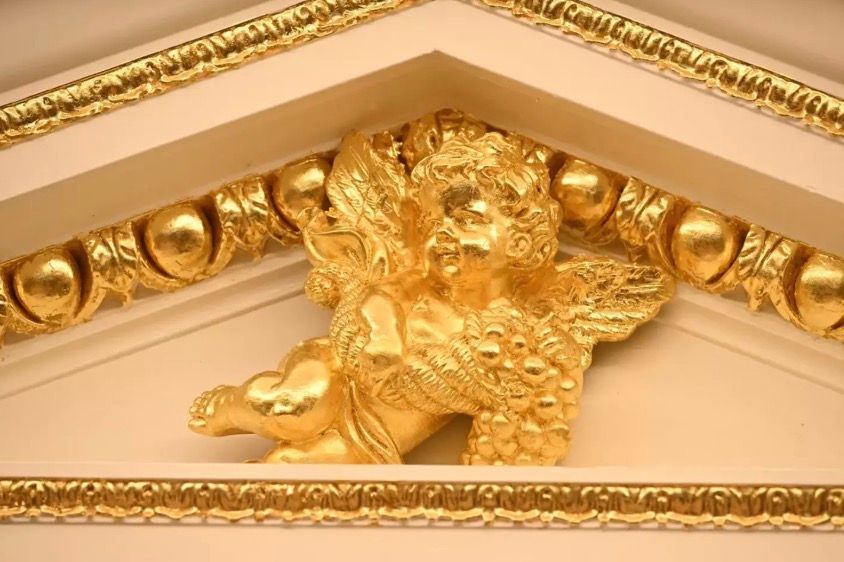
As the posts rolled on, a pattern formed: gold versus groceries, gilded walls versus empty fridges. One person summed it up this way: the Oval Office was being remodeled with more gold just after the $200 million ballroom was ordered, and it all came alongside cuts that would touch millions—health care taken from 17 million Americans, food taken from hungry kids. Whether every number or detail in every post was perfect wasn’t the point for the posters. The point was the contrast. The rhetoric wrote itself: a golden ballroom on one side of the scale, everyday needs on the other.
There were voices that stepped back from party lines to talk about identity. “Whatever your politics,” one person said, “all the gold in the White House is disgusting.” In their next breath, they added something more basic: this is not who America is. The United States doesn’t have kings. It doesn’t build palaces. That might be an old belief, maybe even a little romantic, but it’s powerful. It’s the idea that the White House should feel stately without feeling royal, grand without feeling gaudy. For many, that line is part of the country’s story.
Questions turned into direct challenges. Are you okay, one user asked, with spending $200 million on a gold-plated ballroom while cutting school meals and Medicaid? That question circulated widely because it was simple. It set one big shiny expense next to programs a lot of people either use or know someone who does. It’s hard to argue with a vivid comparison, and harder still when food and health care are involved.
News outlets stepped in to frame the policy side. CNBC reported that concerns were tied to a recent reconciliation package from the Republican administration. According to their reporting, the package included major cuts to the Supplemental Nutrition Assistance Program, known as SNAP, which helps low-income families buy food. The phrase “big, beautiful” was used to describe the overall package, but for many readers, the words that mattered were “substantial cutbacks” to a program that keeps cupboards from going empty.
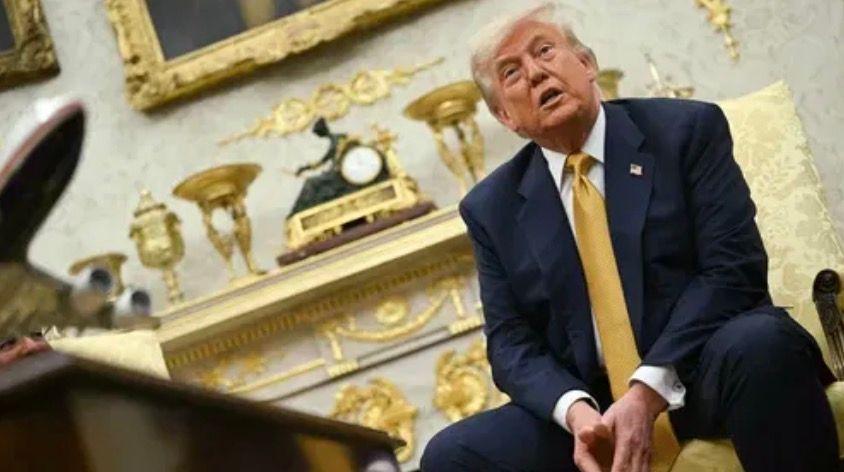
Numbers sharpened the edges. Reporters said that more than twenty-two million families would lose SNAP benefits under the legislation—families that rely on those benefits for basic groceries. The New York Times added a stark historical note, describing the cuts as the largest reduction to SNAP since 1939, when the food stamp program began during the Great Depression. You don’t have to be a policy expert to feel the weight of that comparison. When people hear “since the Great Depression,” they know it’s serious.
That’s how two kinds of stories merged into one: a décor story and a budget story. On their own, each would have been big. Together, they created a strong narrative that critics could rally around. On one side, you had gold cherubs and a golden ballroom. On the other, you had hungry families and tightening belts. The images collided and stuck.
Defenders of the project had their own points, even if they were quieter in the online uproar. The official statement about the ballroom stressed function and dignity. Hosting world leaders in a tent can look second-rate, they argued, and the White House should be able to stage events worthy of a superpower. A formal ballroom would avoid the ugly tent and make logistics simpler: better security, better acoustics, better optics. Supporters also noted that renovations and additions are not new in White House history. The building has been rebuilt, expanded, and refreshed many times. Every president leaves a mark, and sometimes those changes are controversial in the moment and ordinary in hindsight.
But the gold was different, at least in how people perceived it. Gold is symbolic. It says luxury, even excess. It says “look at me.” In certain settings—a cathedral, a palace, a hotel lobby—that message is expected. In the Oval Office, it changes the tone. It tells a story about a leader’s taste and priorities, and in politics, taste can be political. If your style leans toward opulence, critics will tie that to your choices. They’ll say your taste in décor mirrors your approach to governing: flashy, expensive, focused on image. Whether that’s fair or not, it’s the game. Politics is storytelling, and symbols are the sharpest tools in the box.
The age of the President was tossed into the chatter too, because numbers always are. At seventy-nine, he was, to some, an old hand doubling down on an old brand. To others, he was consistent, doing what he had always done: bringing his personal aesthetic into every space he touched. The Mar-a-Lago tie-ins made that clear. If you know those clubs—lots of gilding, lots of shine—you know the look. Importing details from there to here wasn’t just a design choice; it was a signature.
As the debate rolled on, another theme surfaced: time. People asked why the ballroom and the gold were happening now. Was this about legacy? Was it about cementing a style that would last beyond the term? Some critics even speculated that the changes signaled plans to stay longer, to push for a third term. That idea, whether plausible or not, gave critics a narrative hook. It turned decorative choices into hints of deeper ambition. Even if the law and the calendar would say otherwise, the rumor made for viral posts and heated threads.
Meanwhile, the policy debate kept beating on. SNAP is one of those programs most people don’t think about until they need it. When cuts are proposed, suddenly the invisible becomes visible. Grocery prices rise, and small changes can have big effects. A family that loses benefit dollars might cut fresh fruit, then meat, then meals. It’s not hard to understand why the public reacts strongly to that. If the story were only about renovations, it would be a fight about taste and spending. Add food and health care, and you’re arguing about survival.
The White House’s rationale about hosting wasn’t wrong. State dinners matter. Ceremonies matter. The optics of diplomacy matter. Tents have their limits. But good reasons can get drowned out when the details feel out of step with the moment. Gold is loud. Hunger is louder. In a country where millions struggle to pay rent or buy groceries, a golden ballroom can look like a tone-deaf choice, no matter the explanation. Symbols collide, and the louder one wins.
There is also the long memory of the building itself. The White House has seen wars, weddings, scandals, and funerals. It has burned and been rebuilt. It has hosted monarchs and musicians, astronauts and activists. Every change to it, from kitchen remodels to West Wing overhauls, becomes part of the story. Some changes are practical and fade into the background. Others define an era. Think of the Rose Garden tweaks that spark fights every few years. Think of the Truman renovation, which stripped the interior to the studs. Those choices are still discussed decades later. Gold cherubs over the Oval Office doorway—whether they stay or not—will be remembered because they’re striking. They say as much about us as about the building: what we tolerate, what we celebrate, what we mock.
There’s a paradox at the center of it all. Americans like showmanship, but they also like humility. They want their leaders to look powerful on the world stage, but they don’t want them to look like kings at home. They want state dinners that impress, but not an attitude that excludes. When a president leans too hard into luxury, the public pushes back. When he leans too far into austerity, others complain that he’s diminishing the office. Navigating that line is part of the job. The décor is not just décor. It’s a message.
As the days passed after the announcement, people settled into their positions. Supporters saw a practical investment that would save the White House from awkward event setups and give it the grandeur it deserves during major occasions. Critics saw a glitzy project out of step with cuts to social programs that help the most vulnerable. The fact that the same news cycle included both stories only made the split starker. Gold from Mar-a-Lago. Groceries taken away. It felt like a headline someone had written on purpose.
It’s worth remembering that the White House is funded in complicated ways. There’s public money, private donations, and the ever-confusing tangle of what comes from where and why. That complexity can get lost when people are hurt, or afraid, or angry. If your SNAP benefits are shrinking, the finer points of budgeting and procurement don’t matter. What matters is whether you can fill a shopping cart and feed your family. A golden ceiling doesn’t butter toast.
The story also revealed something about how political narratives are made now. A single design choice—a cherub here, a shiny trim there—becomes a symbol that can be photographed, posted, and shared a million times. Add a single dollar figure—$200,000,000—and the symbol becomes a weapon. People don’t have to read a long policy memo. They see the contrast and decide how they feel. In a world wired for images and outrage, the side with the more vivid picture often wins the day.
Yet, beyond the noise, there’s a question that doesn’t go away: What should the White House look like? It’s not a museum frozen in time. It’s not a private home either. It belongs to the public, even if the public doesn’t walk its halls. That means every president is a temporary steward. Taste matters, but stewardship matters more. The building should be beautiful, yes. It should honor history and carry the weight of the office. It should welcome allies and impress rivals. But it should also feel like it belongs to us, not to one person’s brand. That balance is hard. It always will be.
In the end, the story of the gold and the ballroom may go the way of many political storms. Some things will be built. Some pieces of décor will be installed, then removed by a future team with a different vision. The ballroom might host a state dinner that people remember for all the right reasons. The gold might be painted over one day with a calmer color. Meanwhile, the policy choices will ripple outward. Families will feel them in kitchens and clinics. Budgets will be reworked. Advocates will fight to restore cuts. Lawmakers will argue and deal and vote. The cycle will continue.
But for a moment, at least, the country looked at two simple things—a gilded room and a grocery budget—and took a side. It wasn’t just about taste. It was about values. Do we show strength with shine, or with care? Do we mark our power by what we build, or by whom we feed? People can answer those questions differently and still love their country. That’s the honest part of the debate. The hard part is living with the choices we make when the cameras are off and the bills come due.
So the image lingers: a doorway to the Oval Office, framed by small gold cherubs. A President who likes gold, who sees brightness as a kind of promise. A ballroom that aims to make guests feel the weight of American ceremony. And outside that frame, families at a checkout counter, counting dollars, counting days until the next benefits reload, deciding what goes back on the shelf. These two scenes don’t belong in the same picture, but in this story they do. That’s why people couldn’t stop talking. That’s why the comments sounded so sharp. It wasn’t only about décor or even about money. It was about what the White House stands for when no one is watching—and what it looks like when everyone is.
